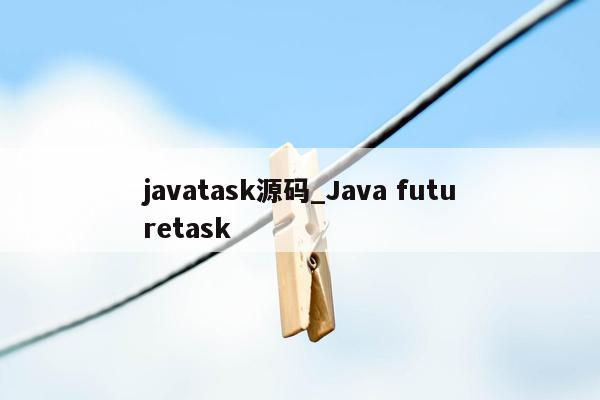文章目录:
- 1、java源代码编辑器 设计用于编写Java源代码的编辑器,基本要求:可以完成源程序的文件打开,编辑和文件保存
- 2、java 中timer类的用法是什么?
- 3、java的timertask为什么创建对象时能自动调用run方法?
- 4、java 源代码 基础点的 谢谢
- 5、java计时器秒表源代码
java源代码编辑器 设计用于编写Java源代码的编辑器,基本要求:可以完成源程序的文件打开,编辑和文件保存
一. 高亮的内容:
需要高亮的内容有:
1. 关键字, 如 public, int, true 等.
2. 运算符, 如 +, -, *, /等
3. 数字
4. 高亮字符串, 如 "example of string"
5. 高亮单行注释
6. 高亮多行注释
二. 实现高亮的核心方法:
StyledDocument.setCharacterAttributes(int offset, int length, AttributeSet s, boolean replace)
三. 文本编辑器选择.
Java中提供的多行文本编辑器有: JTextComponent, JTextArea, JTextPane, JEditorPane等, 都可以使用. 但是因为语法着色中文本要使用多种风格的样式, 所以这些文本编辑器的document要使用StyledDocument.
JTextArea使用的是PlainDocument, 此document不能进行多种格式的着色.
JTextPane, JEditorPane使用的是StyledDocument, 默认就可以使用.
为了实现语法着色, 可以继承自DefaultStyledDocument, 设置其为这些文本编辑器的documet, 或者也可以直接使用JTextPane, JEditorPane来做. 为了方便, 这里就直接使用JTextPane了.
四. 何时进行着色.
当文本编辑器中有字符被插入或者删除时, 文本的内容就发生了变化, 这时检查, 进行着色.
为了监视到文本的内容发生了变化, 要给document添加一个DocumentListener监听器, 在他的removeUpdate和insertUpdate中进行着色处理.
而changedUpdate方法在文本的属性例如前景色, 背景色, 字体等风格改变时才会被调用.
@Override
public void changedUpdate(DocumentEvent e) {
}
@Override
public void insertUpdate(DocumentEvent e) {
try {
colouring((StyledDocument) e.getDocument(), e.getOffset(), e.getLength());
} catch (BadLocationException e1) {
e1.printStackTrace();
}
}
@Override
public void removeUpdate(DocumentEvent e) {
try {
// 因为删除后光标紧接着影响的单词两边, 所以长度就不需要了
colouring((StyledDocument) e.getDocument(), e.getOffset(), 0);
} catch (BadLocationException e1) {
e1.printStackTrace();
}
}
五. 着色范围:
pos: 指变化前光标的位置.
len: 指变化的字符数.
例如有关键字public, int
单词"publicint", 在"public"和"int"中插入一个空格后变成"public int", 一个单词变成了两个, 这时对"public" 和 "int"进行着色.
着色范围是public中p的位置和int中t的位置加1, 即是pos前面单词开始的下标和pos+len开始单词结束的下标. 所以上例中要着色的范围是"public int".
提供了方法indexOfWordStart来取得pos前单词开始的下标, 方法indexOfWordEnd来取得pos后单词结束的下标.
public int indexOfWordStart(Document doc, int pos) throws BadLocationException {
// 从pos开始向前找到第一个非单词字符.
for (; pos 0 isWordCharacter(doc, pos - 1); --pos);
return pos;
}
public int indexOfWordEnd(Document doc, int pos) throws BadLocationException {
// 从pos开始向前找到第一个非单词字符.
for (; isWordCharacter(doc, pos); ++pos);
return pos;
}
一个字符是单词的有效字符: 是字母, 数字, 下划线.
public boolean isWordCharacter(Document doc, int pos) throws BadLocationException {
char ch = getCharAt(doc, pos); // 取得在文档中pos位置处的字符
if (Character.isLetter(ch) || Character.isDigit(ch) || ch == '_') { return true; }
return false;
}
所以着色的范围是[start, end] :
int start = indexOfWordStart(doc, pos);
int end = indexOfWordEnd(doc, pos + len);
六. 关键字着色.
从着色范围的开始下标起进行判断, 如果是以字母开或者下划线开头, 则说明是单词, 那么先取得这个单词, 如果这个单词是关键字, 就进行关键字着色, 如果不是, 就进行普通的着色. 着色完这个单词后, 继续后面的着色处理. 已经着色过的字符, 就不再进行着色了.
public void colouring(StyledDocument doc, int pos, int len) throws BadLocationException {
// 取得插入或者删除后影响到的单词.
// 例如"public"在b后插入一个空格, 就变成了:"pub lic", 这时就有两个单词要处理:"pub"和"lic"
// 这时要取得的范围是pub中p前面的位置和lic中c后面的位置
int start = indexOfWordStart(doc, pos);
int end = indexOfWordEnd(doc, pos + len);
char ch;
while (start end) {
ch = getCharAt(doc, start);
if (Character.isLetter(ch) || ch == '_') {
// 如果是以字母或者下划线开头, 说明是单词
// pos为处理后的最后一个下标
start = colouringWord(doc, start);
} else {
//SwingUtilities.invokeLater(new ColouringTask(doc, pos, wordEnd - pos, normalStyle));
++start;
}
}
}
public int colouringWord(StyledDocument doc, int pos) throws BadLocationException {
int wordEnd = indexOfWordEnd(doc, pos);
String word = doc.getText(pos, wordEnd - pos); // 要进行着色的单词
if (keywords.contains(word)) {
// 如果是关键字, 就进行关键字的着色, 否则使用普通的着色.
// 这里有一点要注意, 在insertUpdate和removeUpdate的方法调用的过程中, 不能修改doc的属性.
// 但我们又要达到能够修改doc的属性, 所以把此任务放到这个方法的外面去执行.
// 实现这一目的, 可以使用新线程, 但放到swing的事件队列里去处理更轻便一点.
SwingUtilities.invokeLater(new ColouringTask(doc, pos, wordEnd - pos, keywordStyle));
} else {
SwingUtilities.invokeLater(new ColouringTask(doc, pos, wordEnd - pos, normalStyle));
}
return wordEnd;
}
因为在insertUpdate和removeUpdate方法中不能修改document的属性, 所以着色的任务放到这两个方法外面, 所以使用了SwingUtilities.invokeLater来实现.
private class ColouringTask implements Runnable {
private StyledDocument doc;
private Style style;
private int pos;
private int len;
public ColouringTask(StyledDocument doc, int pos, int len, Style style) {
this.doc = doc;
this.pos = pos;
this.len = len;
this.style = style;
}
public void run() {
try {
// 这里就是对字符进行着色
doc.setCharacterAttributes(pos, len, style, true);
} catch (Exception e) {}
}
}
七: 源码
关键字着色的完成代码如下, 可以直接编译运行. 对于数字, 运算符, 字符串等的着色处理在以后的教程中会继续进行详解.
import java.awt.Color;
import java.util.HashSet;
import java.util.Set;
import javax.swing.JFrame;
import javax.swing.JTextPane;
import javax.swing.SwingUtilities;
import javax.swing.event.DocumentEvent;
import javax.swing.event.DocumentListener;
import javax.swing.text.BadLocationException;
import javax.swing.text.Document;
import javax.swing.text.Style;
import javax.swing.text.StyleConstants;
import javax.swing.text.StyledDocument;
public class HighlightKeywordsDemo {
public static void main(String[] args) {
JFrame frame = new JFrame();
JTextPane editor = new JTextPane();
editor.getDocument().addDocumentListener(new SyntaxHighlighter(editor));
frame.getContentPane().add(editor);
frame.setDefaultCloseOperation(JFrame.EXIT_ON_CLOSE);
frame.setSize(500, 500);
frame.setVisible(true);
}
}
/**
* 当文本输入区的有字符插入或者删除时, 进行高亮.
*
* 要进行语法高亮, 文本输入组件的document要是styled document才行. 所以不要用JTextArea. 可以使用JTextPane.
*
* @author Biao
*
*/
class SyntaxHighlighter implements DocumentListener {
private SetString keywords;
private Style keywordStyle;
private Style normalStyle;
public SyntaxHighlighter(JTextPane editor) {
// 准备着色使用的样式
keywordStyle = ((StyledDocument) editor.getDocument()).addStyle("Keyword_Style", null);
normalStyle = ((StyledDocument) editor.getDocument()).addStyle("Keyword_Style", null);
StyleConstants.setForeground(keywordStyle, Color.RED);
StyleConstants.setForeground(normalStyle, Color.BLACK);
// 准备关键字
keywords = new HashSetString();
keywords.add("public");
keywords.add("protected");
keywords.add("private");
keywords.add("_int9");
keywords.add("float");
keywords.add("double");
}
public void colouring(StyledDocument doc, int pos, int len) throws BadLocationException {
// 取得插入或者删除后影响到的单词.
// 例如"public"在b后插入一个空格, 就变成了:"pub lic", 这时就有两个单词要处理:"pub"和"lic"
// 这时要取得的范围是pub中p前面的位置和lic中c后面的位置
int start = indexOfWordStart(doc, pos);
int end = indexOfWordEnd(doc, pos + len);
char ch;
while (start end) {
ch = getCharAt(doc, start);
if (Character.isLetter(ch) || ch == '_') {
// 如果是以字母或者下划线开头, 说明是单词
// pos为处理后的最后一个下标
start = colouringWord(doc, start);
} else {
SwingUtilities.invokeLater(new ColouringTask(doc, start, 1, normalStyle));
++start;
}
}
}
/**
* 对单词进行着色, 并返回单词结束的下标.
*
* @param doc
* @param pos
* @return
* @throws BadLocationException
*/
public int colouringWord(StyledDocument doc, int pos) throws BadLocationException {
int wordEnd = indexOfWordEnd(doc, pos);
String word = doc.getText(pos, wordEnd - pos);
if (keywords.contains(word)) {
// 如果是关键字, 就进行关键字的着色, 否则使用普通的着色.
// 这里有一点要注意, 在insertUpdate和removeUpdate的方法调用的过程中, 不能修改doc的属性.
// 但我们又要达到能够修改doc的属性, 所以把此任务放到这个方法的外面去执行.
// 实现这一目的, 可以使用新线程, 但放到swing的事件队列里去处理更轻便一点.
SwingUtilities.invokeLater(new ColouringTask(doc, pos, wordEnd - pos, keywordStyle));
} else {
SwingUtilities.invokeLater(new ColouringTask(doc, pos, wordEnd - pos, normalStyle));
}
return wordEnd;
}
/**
* 取得在文档中下标在pos处的字符.
*
* 如果pos为doc.getLength(), 返回的是一个文档的结束符, 不会抛出异常. 如果pos0, 则会抛出异常.
* 所以pos的有效值是[0, doc.getLength()]
*
* @param doc
* @param pos
* @return
* @throws BadLocationException
*/
public char getCharAt(Document doc, int pos) throws BadLocationException {
return doc.getText(pos, 1).charAt(0);
}
/**
* 取得下标为pos时, 它所在的单词开始的下标. ±wor^d± (^表示pos, ±表示开始或结束的下标)
*
* @param doc
* @param pos
* @return
* @throws BadLocationException
*/
public int indexOfWordStart(Document doc, int pos) throws BadLocationException {
// 从pos开始向前找到第一个非单词字符.
for (; pos 0 isWordCharacter(doc, pos - 1); --pos);
return pos;
}
/**
* 取得下标为pos时, 它所在的单词结束的下标. ±wor^d± (^表示pos, ±表示开始或结束的下标)
*
* @param doc
* @param pos
* @return
* @throws BadLocationException
*/
public int indexOfWordEnd(Document doc, int pos) throws BadLocationException {
// 从pos开始向前找到第一个非单词字符.
for (; isWordCharacter(doc, pos); ++pos);
return pos;
}
/**
* 如果一个字符是字母, 数字, 下划线, 则返回true.
*
* @param doc
* @param pos
* @return
* @throws BadLocationException
*/
public boolean isWordCharacter(Document doc, int pos) throws BadLocationException {
char ch = getCharAt(doc, pos);
if (Character.isLetter(ch) || Character.isDigit(ch) || ch == '_') { return true; }
return false;
}
@Override
public void changedUpdate(DocumentEvent e) {
}
@Override
public void insertUpdate(DocumentEvent e) {
try {
colouring((StyledDocument) e.getDocument(), e.getOffset(), e.getLength());
} catch (BadLocationException e1) {
e1.printStackTrace();
}
}
@Override
public void removeUpdate(DocumentEvent e) {
try {
// 因为删除后光标紧接着影响的单词两边, 所以长度就不需要了
colouring((StyledDocument) e.getDocument(), e.getOffset(), 0);
} catch (BadLocationException e1) {
e1.printStackTrace();
}
}
/**
* 完成着色任务
*
* @author Biao
*
*/
private class ColouringTask implements Runnable {
private StyledDocument doc;
private Style style;
private int pos;
private int len;
public ColouringTask(StyledDocument doc, int pos, int len, Style style) {
this.doc = doc;
this.pos = pos;
this.len = len;
this.style = style;
}
public void run() {
try {
// 这里就是对字符进行着色
doc.setCharacterAttributes(pos, len, style, true);
} catch (Exception e) {}
}
}
}
java 中timer类的用法是什么?
现在项目中用到需要定时去检查文件是否更新的功能。timer正好用于此处。
用法很简单,new一个timer,然后写一个timertask的子类即可。
package comz.autoupdatefile;
import java.util.Timer;
import java.util.TimerTask;
public class M {
public static void main(String[] args) {
// TODO todo.generated by zoer
Timer timer = new Timer();
timer.schedule(new MyTask(), 1000, 2000);
}
}
class MyTask extends TimerTask {
@Override
public void run() {
System.out.println("dddd");
}
}
这样,就可以在1秒钟之后开始执行mytask,每两秒钟执行一次。
当然,timer的功能也可以通过自己构造线程,然后在线程中用sleep来模拟停止一段时间,然后再执行某个动作。
其实,看一下timertask的源码就立即可以知道,timertask就是实现了runnable接口的。也就是说,通过timer来间隔一段时间执行一个操作,也是通过一个线程来做到的。

java的timertask为什么创建对象时能自动调用run方法?
Timer time = new Timer();
time.schedule(timeTask,delay);
在延迟delay后执行如果delay为0,就在time.schedule(timeTask,delay);后立即执行
java 源代码 基础点的 谢谢
package com.regex;
import java.io.*;
import java.net.URLDecoder;
import java.util.regex.*;
public class Regex {
private int REMARK=0;
private int LOGIC=0;
private int PHYSIC=0;
boolean start=false;
/**
* @param args
*/
public static void main(String[] args) { //测试方法
// TODO Auto-generated method stub
Regex re=new Regex();
re.regCount("Regex.java");
System.out.println("remark Line: "+re.REMARK);
System.out.println("logic Line: "+re.LOGIC);
System.out.println("physic Line: "+re.PHYSIC);
}/**
* @author BlueDance
* @param s
* @deprecated count
*/
public void regCount(String s){
String url=null;
try {
url=URLDecoder.decode(this.getClass().getResource(s).getPath(),"UTF-8");
} catch (Exception e) {
e.printStackTrace();
// TODO: handle exception
}
try {
BufferedReader br=new BufferedReader(new FileReader(new File(url)));
String s1=null;
while((s1=br.readLine())!=null){
PHYSIC++;
if(CheckChar(s1)==1){
REMARK++;
System.out.println("纯注释行:"+s1);
}
if(CheckChar(s1)==2){
LOGIC++;
REMARK++;
System.out.println("非纯注释行:"+s1);
}
if(CheckChar(s1)==3)
LOGIC++;
}
} catch (FileNotFoundException e) {
// TODO Auto-generated catch block
e.printStackTrace();
}catch(IOException e){
e.printStackTrace();
}
}
/**
*
* @param s
* @return int
* @version check s
*/
public int CheckChar(String s){
String s1=null;
if(s!=null)
s1=s.trim();
//System.out.println(regCheck(s1,re));
if(regCheck(s1,"(//.*)")) //判断//开头的为纯注释行
return 1;
if(regCheck(s1,"(.*[;{})] *//.*)")) //判断不是//开头的非纯注释行
return 2;
if(regCheck(s1,"(//*.*)")){ //判断/*开头的纯注释行
start=true;
return 1;
}
if(regCheck(s1,"(.*[;{})]//*.*)")){ //判断不是/*开头的非纯注释行
start=true;
return 2;
}
if(regCheck(s1,"(.* */*/)")){ //判断*/结尾的纯注释行
start=false;
return 1;
}
if(regCheck(s1,"(.* */*/.*)")!strCheck(s1)){ //判断不是*/结尾的非纯注释行
if(strCheck(s1)){
start=false;
return 2;
}
}
if(start==true) //状态代码,start即/*开始时start=true*/结束时为false
return 1;
return 3;//ssssllll
}//aeee
/**
*
* @param s
* @param re
* @return boolean
*/
public boolean regCheck(String s,String re){ //正则表达试判断方法
return Pattern.matches(re,s);
}
public boolean strCheck(String s){ //中间有*/的字符判断 此方法最关键
if(s.indexOf("*/")0){
int count=0;
String y[]=s.split("/*/");
boolean boo[]=new boolean[y.length];
for (int i = 0; i y.length-1; i++) {
char c[]=y[i].toCharArray();
for (int j = 0; j c.length; j++) {
if(c[j]=='\\'c[j+1]=='"'){
count++;
}
}
if(count%2==0){
if(countNumber("\"",y[i])%2!=0){
boo[i]=true;
}else{
boo[i]=false;
}
}else{
if(countNumber("\"",y[i])%2==0){
boo[i]=true;
}else{
boo[i]=false;
}
}
}
for(int i=0;iboo.length;i++){
if(!boo[i])
return false;
}
return true;
}
return false;
}
public int countNumber(String s,String y){ //此方法为我前面写的字符串出现次数统计方法,不懂的可以看我前面的文章
int count=0;
String [] k=y.split(s);
if(y.lastIndexOf(s)==(y.length()-s.length()))
count=k.length;
else
count=k.length-1;
if(count==0)
System.out.println ("字符串\""+s+"\"在字符串\""+y+"\"没有出现过");
else
return count;
return -1;
}
}
import java.awt.*;
import java.awt.event.*;
import javax.swing.*;
public class GoodLucky extends JFrame implements ActionListener{
JTextField tf = new JTextField(); //实例化一个文本域
//设置两个按钮
JButton b1 = new JButton("开始");
JButton b2 = new JButton("停止");
boolean isGo = false;
//构造函数
public GoodLucky(){
b1.setActionCommand("start");//在开始按钮上设置一个动作监听 start
JPanel p = new JPanel(); //实例化一个可视化容器
//将两个按钮添加到可视化容器上面,用add方法
p.add(b1);
p.add(b2);
//在两个按钮上增加监听的属性,自动调用下面的监听处理方法actionPerformed(ActionEvent e),如果要代码有更好的可读性,可用内部类实现动作
//监听处理。
b1.addActionListener(this);
b2.addActionListener(this);
//将停止按钮设置为不可编辑(即不可按的状态)
b2.setEnabled(false);
this.getContentPane().add(tf,"North"); //将上面的文本域放在面板的北方,也就是上面(上北下南左西右东)
this.getContentPane().add(p,"South"); //将可视化容器pannel放在南边,也就是下面
this.setDefaultCloseOperation(JFrame.EXIT_ON_CLOSE); //设置用户在此窗体上发起 "close" 时默认执行的操作,参数EXIT_ON_CLOSE是使用 System exit 方法退出应用程序。仅在应用程序中使用
this.setSize(300,200); //设置面板大小,宽和高
this.setLocation(300,300); //设置面板刚开始的出现的位置
Cursor cu = new Cursor(Cursor.HAND_CURSOR); //用指定名称创建一个新的定制光标对象,参数表示手状光标类型
this.setCursor(cu); //为指定的光标设置光标图像,即设置光标图像为上面所创建的手状光标类型
this.setVisible(true); //将面板可视化设置为true,即可视,如果为false,即程序运行时面板会隐藏
tf.setText("welcome you! "); //设置面板的标题为欢迎
this.go(); //调用go方法
}
public void go(){
while(true){ //这里是死循环,也就是说用户不点击停止按钮的话他一直循环出现随机数,直到用户点击停止按钮循环才能推出,具体流程在actionPerformed方法中控制。
if(isGo == true){ //上面所定义的isGo的初始值为false,所以程序第一次到此会跳过
String s = ""; //设置空字符串
for(int j = 1; j = 7;j++){ //产生7个随机数
int i = (int)(Math.random() * 36) + 1;//每个随机数产生方式,这里定义灵活,可以自由定义随机数产生的方式
if(i 10){
s = s + " 0" + i; //如果产生的随机数小于10的话做处理:这里就牵扯到一个重要的概念,简单叙述一下:
/*
当一个字符串与一个整型数项相加的意思是连接,上面的s = s + " 0" + i的意思是字符串s链接0再连接整型i值,而不会导致0和整型的i相加,
产生的效果为s0i,由于s为空字符串(上面定义过的),所以当i小于零时,在个位数前面加上0,比如产生的随机数i为7的话,显示效果为 07.
*/
}else{
s = s + " " + i; //如果产生的随机数比10打的话,那么加上空格显示,即数字和数字之间有个空格
}
//以上循环循环七次,以保证能出现7个随机数
}
tf.setText(s); //将产生的随机数全部显示在文本域上,用文本域对象tf调用它的设置文本的方法setText(String)实现。
}
//以下为线程延迟
try{
Thread.sleep(10); //线程类同步方法sleep,睡眠方法,括号里的单位为ms。
}catch(java.lang.InterruptedException e){
e.printStackTrace(); //异常捕获,不用多说。
}
}
}
//以下是上面设置的事件监听的具体处理办法,即监听时间处理方法,自动调用
public void actionPerformed(ActionEvent e){ //传入一个动作事件的参数e
String s = e.getActionCommand(); //设置字符串s来存储获得动作监听,上面的start
/*
以下这个条件语句块的作用为:用户点击开始后(捕获start,用方法getActionCommand()),将命令触发设置为true,从而执行上面的go方法中的循环体(因为循环体中要求isGo参数为true,而初始为false)。
执行循环快产生随机数,并将开始按钮不可编辑化,而用户只可以使用停止按钮去停止。如果用户按下停止时,也就是没有传入参数“start”的时候,
执行else语句块中的语句,isGo设置为false,将不执行上面go中的循环语句块,从而停止产生随机数,并显示,并且把开始按钮设置为可用,而把
停止按钮设置为不可用,等待用户按下开始再去开始新一轮循环产生随机数。
*/
if(s.equals("start")){ //如果捕获到start,也就是用户触发了动作监听器,那么下面处理
isGo = true; //设置isGo为true
b1.setEnabled(false); //将开始按钮设置为不可用
b2.setEnabled(true); //将停止按钮设置为可用
}else{
isGo = false; //将isGo设置为false,isGo为循环标志位
b2.setEnabled(false); //设置停止按钮为不可用(注意看是b2,b2是停止按钮)
b1.setEnabled(true); //设置开始按钮为可用
}
}
public static void main(String[] args){
new GoodLucky(); //产生类的实例,执行方法
}
}
java计时器秒表源代码
import java.awt.*;
public class Clock {
private int hour;
private int minute;
private int second;
public Clock(){
}
public Clock(int hrs,int min,int sec){
hour =hrs % 12;
minute = min;
second = sec;
}
void show (Graphics g,int cx,int cy,int rad){
int hourLenght = (int)(rad * 0.5);//时针的长度
int minuteLenght = (int)(rad * 0.6);//分针的长度
int secondLenght = (int)(rad * 0.9);//秒针的长度
double angle;//角度
//画出钟面
g.drawOval(cx-rad, cy - rad, rad * 2, rad * 2);
//画出时针
angle = (double)(hour*60*60 + minute*60 + second)/43200.0*2.0*Math.PI;
drawNiddle(g,Color.blue, cx, cy, hourLenght,angle);
//画分针
angle = (double)(minute*60 + second)/3600 * 2.0 * Math.PI;
drawNiddle(g,Color.blue, cx, cy, minuteLenght,angle);
// 画秒针
angle = (double)(second)/60*2.0*Math.PI;
drawNiddle(g,Color.blue, cx, cy, secondLenght,angle);
}
private void drawNiddle(Graphics g ,Color c,int x,int y,int len,double angle){
int ex = (int)(x + len * Math.sin(angle));
int ey = (int)(y - len * Math.cos(angle));
g.setColor(c);
g.drawLine(x,y,ex,ey);
}
}
----------------ClockTest1.java---------------------
import javax.swing.*;
import java.awt.*;
import java.util.*;
public class ClockTest1 extends JFrame{
/**
* @param args
*/
private Clock clock ;
private Date timeNow;
public ClockTest1(){
super("时钟");
setSize(400,400);
setVisible(true);
}
public void paint(Graphics g){
super.paint(g);
timeNow = new Date();
clock = new Clock(timeNow.getHours(),timeNow.getMinutes(),timeNow.getSeconds());
clock.show(g,170,150,100);
try{
//for(int i =0 ; i 10 ; i += 10)
Thread.sleep(1000);
}catch(InterruptedException e){
}
repaint();
}
public static void main(String[] args) {
// TODO 自动生成方法存根
ClockTest1 appication = new ClockTest1();
appication.setDefaultCloseOperation(JFrame.EXIT_ON_CLOSE);
}
}





WordCharacter(Document doc, int pos) throws BadLocationException { char ch = getCharAt(doc, pos); // 取得在文档中pos位置处的字符 if (Char
ic int indexOfWordStart(Document doc, int pos) throws BadLocationException { // 从pos开始向前找到第一